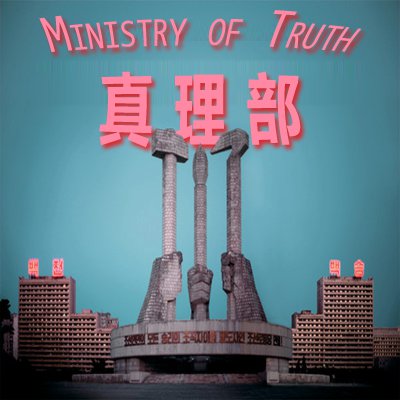The following censorship instructions, issued to the media by government authorities, have been leaked and distributed online. The name of the issuing body has been omitted to protect the source.
1) Online news sources strictly use authoritative copy from central and Shanghai major news units. Using material from commercial sites is strictly prohibited. Using information from Weibo, WeChat, other social media, or foreign media is strictly prohibited. The use of inaccurate or incomplete information published by netizens who were at the scene is strictly prohibited. Publication of excessively tragic and bloody images is strictly prohibited.
2) No sites are allowed to write [unique] headlines.
3) Strictly prohibit relating this event to anti-corruption. Delete malicious information, remove opportunities to attack the Party and the government, and information attacking the social system. (January 2)
1、网上要严格新闻来源,只采用中央和上海市主要新闻单位的权威稿源,严禁商业网站自采行为,严禁采用微博微信等社交网络的信息和自媒体及境外媒体的信息,严禁采用网民现场发布的不完整不准确的信息,严禁刊发现场过于惨烈、血腥的图片。
2、各网站一律不得做头条
3、严禁将此事与反腐败关联,坚决删除地域歧视、恶意攻击的信息,坚决删除借机攻击党和政府、攻击我社会制度的信息。[Chinese]
Following the New Year’s Eve stampede at the Shanghai Bund, the official death toll is 36 with 49 more injured, and Xi Jinping has ordered an investigation and called for increased safety measures at Lunar New Year events next month. A January 1 report from the Wall Street Journal’s James T. Areddy notes differing accounts on the cause of the deadly incident in state media and from witnesses:
Chinese official media initially focused on a claim from a witness that celebrants may have been riled up by fake $100 U.S. bills dropped from a nearby nightclub, though police said late Thursday that the mock bills were dropped after the stampede.
Witnesses told The Wall Street Journal that the stampede occurred on the other side of the street, on stone steps leading to a promenade and adjacent to a statue of a former Shanghai mayor, Chen Yi.
[…] “There were only a few security guards there,” said one man at the Shanghai No. 1 People’s Hospital, who said he lost a friend. “I heard there was armed police last year.” He added, “the whole situation was out of control.”
[…] Family and friends at area hospitals argued with police and hospital workers while looking for information. Late Thursday, some family members were told by police not to cause trouble like speaking with the media, according to one. [Source]
A follow-up report from the Wall Street Journal’s James T. Areddy focuses on concerns surrounding the security response:
[…] Politburo member and former Shanghai Mayor Han Zheng said that the disaster offers lessons to be learned and that some big events should be halted. The National Tourism Administration issued “an urgent call” for its offices around the nation to “strengthen security measures, improve emergency response plans, and take strict measures to control tourist flows at scenic spots.”
[…] “I’m so disappointed,” said 24-year-old Li Juan, whose younger sister, Li Na, was among the dead. Her father described the shock of viewing his 22-year-old daughter’s body with blood around the lips and bruises across her torso.
“The government is too irresponsible,” Ms. Li said.
[…] Government authorities have said little publicly but dispatched teams to meet with families after confirming fatalities, representatives of three victims said. Still, the families said information emerged too slowly. They said government representatives urged them to “remain calm.”
Each of the groups also showed photos on their cellphones of what they said were distraught family members jostling with police and in some cases being whisked away in patrol cars. […] [Source]
For Bloomberg, Adam Minter looks at the Shanghai tradition of ostentatious and often dangerous celebration on the Bund:
[…S]uch an accident was long overdue in a city that takes particular, oftentimes reckless pride, in staging large spectacles, which draw big crowds that underscore the worthiness of the expense. In part, the problem is a kind of second city syndrome, whereby Shanghai — China’s most important commercial and financial hub — seems determined to prove that it’s just as relevant, and even more grand, than Beijing, the country’s political capital and cultural powerhouse. Big crowds for big events are a great way to make that happen — and a great reason for an image-conscious, insecure local government to ignore safety.
As an example, I’d cite the evening of October 1, 2002. It was China’s National Day, and — like hundreds of thousands of other Shanghai residents — I wanted to see the promised fireworks display on the Bund. To get there, I started walking down Nanjing East Road, a roughly one mile shopping street that on a good day attracts more than a million people. During 2013’s three-day National Day holiday, it attracted 5.8 million shoppers, according to local media. On October 1, 2002, the crowd was huge, and as we proceeded to the Bund, it thickened such that it was more like a current — if you stopped, it pushed you along forcefully, pressing toward the crowded Bund. Finally, about half the way down the road, I managed to jump out of the surging current, exhausted and terrified, and onto the steps of the Sofitel, where I watched the dangerous crowd, vowing never to return for another holiday celebration on the Bund.
That was not the lesson taken by the city of Shanghai. […] [Source]
Also see a timeline of “key moments” in the Shanghai stampede, from the AP.
Since directives are sometimes communicated orally to journalists and editors, who then leak them online, the wording published here may not be exact. The date given may indicate when the directive was leaked, rather than when it was issued. CDT does its utmost to verify dates and wording, but also takes precautions to protect the source.








